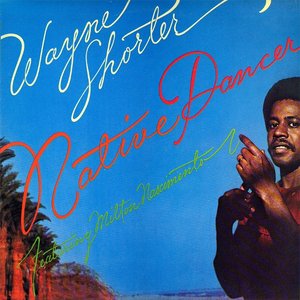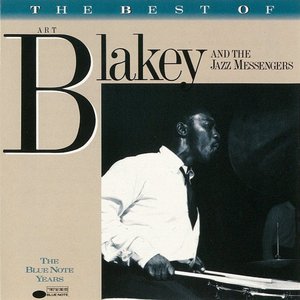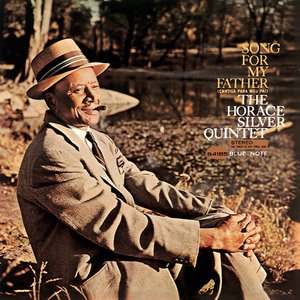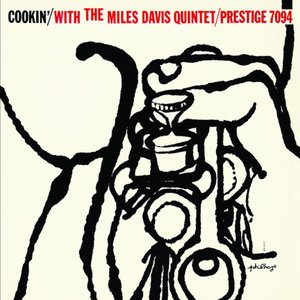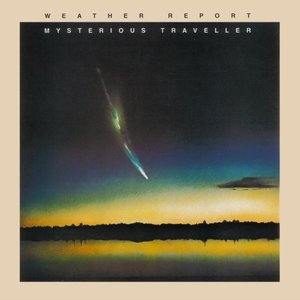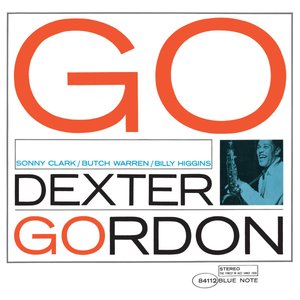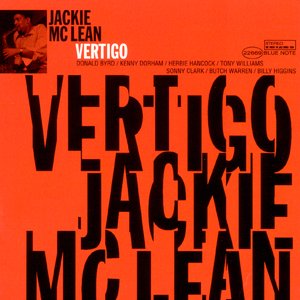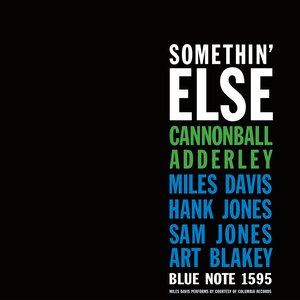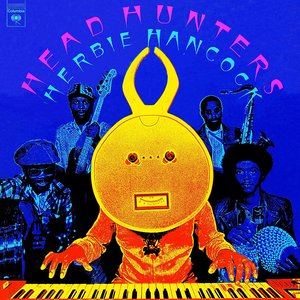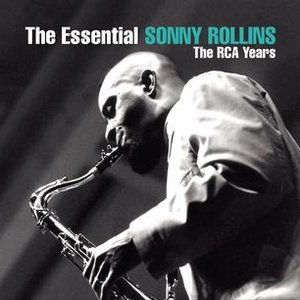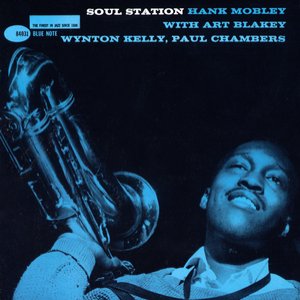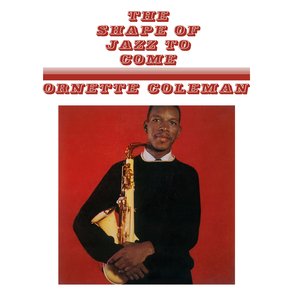Wiki
-
Release Date
1 August 1975
-
Length
5 tracks
Miles Davis trumpet, organ
Sonny Fortune soprano & alto saxophones, flute
Pete Cosey synthesizer, electric guitar, percussion
Reggie Lucas electric guitar
Michael Henderson electric bass
Al Foster drums
Mtume congas, water drums, rhythm box, percussion
Producer Teo Macero
Cover art: Elena Pavlov, photo David Gahr
Recorded live at Osaka Festival Hall, Osaka, Japan on February 1, 1975
Columbia double CD 467897 2 - publ. 1976, CD 1991
Agharta is a live double album by American jazz trumpeter and composer Miles Davis. It was recorded on the afternoon of February 1, 1975, at one of two concerts Davis performed at the Osaka Festival Hall in Japan; the evening show produced his 1976 live album Pangaea.
The concert was recorded by Sony Records under the supervision of Teo Macero, who produced Agharta. The album's four seemingly unstructured segments emphasize the playing of Davis' sidemen rather than his own trumpet and eschews both melody and harmony in favor of a combination of riffs, crossing polyrhythms, and funk-oriented grooves for soloists to improvise throughout. The evolving nature of their improvisations led to the widespread misunderstanding that the music had no compositional basis.
Agharta was first released in Japan by CBS/Sony in August 1975 after Davis had retired. Sony's Japanese division suggested its title, Agharta, which is a mythological subterranean utopia. Davis asked Japanese artist Tadanori Yokoo to design the artwork, which depicts the cityscape of an advanced civilization and draws on both Eastern subterranean myths and Afrofuturism. An alternate cover was produced for the album's 1976 release in North America by Columbia Records.
Although Agharta was widely panned by critics upon its release, the album has since received retrospective acclaim as an important and influential jazz-rock record. Its abrasive music and Cosey's innovative playing influenced a generation of young musicians, including those in the British jazz scene. The album was reissued by Columbia Records in 1991, and in 2009, it was remastered as a part of Sony Legacy's Miles Davis: The Complete Columbia Album Collection.
fter the release of his studio album Get Up with It and his poor showing in year-end magazine polls, Davis had felt that he was losing touch with audiences and listeners by the end of the 1974. He subsequently embarked on his first tour of Japan in 10 and a half years. Between January 22 and February 8, 1975, he played 14 concerts to capacity crowds in large-hall venues and earned enthusiastic reviews. Japanese critic Keizo Takada praised Davis' band as "magnificent and energetic", and wrote that he "must be the genius of managing men and bringing out their hidden talent. He played his music with his band just as Duke Ellington did with his orchestra.]
At the time of his February 1 concert at Osaka Festival Hall, Davis was experiencing severe pain from his left hip, which had been operated on almost 10 years earlier. He had been sick with pneumonia throughout the three-week tour of Japan and had a bleeding ulcer that grew worse, while his hip occasionally and unpredictably slipped out of its socket. During the tour, he was unable to work his wah-wah and volume pedals because of the pain in his legs, so he would go down on his knees to press them with his hand. To relieve his pain and continue performing, Davis used codeine and morphine, smoked, and drank large quantities of Heineken beer, and was able several times to perform two concerts in one day, as he did at Osaka Festival Hall.
Davis' two concerts at the hall on February 1 were recorded and released as two double albums—Agharta was released in August 1975 in Japan and 1976 in North America; Pangaea was released in 1976 The former was an afternoon show, and the latter was recorded in the evening. They were recorded by Sony under the supervision of producer Teo Macero.
The first concert began at 4:00 P.M. Davis played both trumpet and organ, and led a septet that featured flautist and saxophonist Sonny Fortune, bassist Michael Henderson, drummer Al Foster, percussionist James Mtume, guitarist Reggie Lucas, and Pete Cosey, who played guitar, synthesizer, and percussion. The first of their two sets at the concert included performances of "Tatu", "Agharta Prelude", and "Maiysha", which were titled as "Prelude (Part 1)", "Prelude (Part 2)", and "Maiysha", respectively, when they were released on Agharta. "Prelude" was recorded over one and a half sides of the album. The second set included "Right Off", "Ife", and "Wili", which were titled on the album as "Interlude" and "Theme from Jack Johnson", respectively. The titles "Interlude" and "Theme from Jack Johnson" were erroneously reversed on the disc label's track listing and liner notes of all editions of Agharta
Music
Agharta has a more aggressive and dynamic style than the atmospheric sound of Davis' previous electric albums. Its music eschews melody and harmony, and is instead characterized by a combination of riffs, crossing polyrhythms, and funk grooves for soloists to improvise throughout. As with Pangaea and Dark Magus (1977)—the two other live albums showcasing Lucas, Foster, Mtume, and Henderson—most of Agharta 's music is arranged as generically titled medleys. The album's four seemingly unstructured segments emphasize the playing of Davis' sidemen rather than his own trumpet.
In contrast to his previous recordings, the cadenzas throughout Agharta are dominated by Fortune and Cosey, who generated dissonance and feedback as often as possible. The rhythmic direction of the compositions are occasionally interrupted by densely assembled layers of percussive and electronic effects, including repeated whirring sounds, synthesizer grinds, and guitar sounds run through a ring modulator. Mojo magazine's Phil Alexander likened the album's electronic aesthetic to that of German composer Karlheinz Stockhausen and said that the music is "both ambient yet thrashing, melodic yet coruscating."
Agharta has been categorized as jazz-rock by music journalists Jim DeRogatis, Andrzej Trzaskowski, and Simon Reynolds. In The Wire magazine, Reynolds wrote that the album's music "offers a drastic intensification of rock's three most radical aspects: space, timbre, and groove". Music journalist Charles Shaar Murray asserted that Agharta invoked the influence of Jimi Hendrix on Davis' music more explicitly than any other of his albums. Murray felt that while Cosey drew on Hendrix's echoic, free jazz-inspired guitar improvisations and Lucas drew on his lyrical rhythm and blues songs, Davis played alternately succinct and expressive solos and unsentimental wails that suggested he was still mourning Hendrix's death
By contrast, Martha Bayles of The New York Times felt that Davis albums such as Agharta, Pangaea, and Dark Magus "take little from jazz, apart from free improvisation (which Davis had spurned a decade earlier), and little from rock, apart from ear-bleeding volume and electronic instruments." She added that the music instead revealed Davis' affinity for minimalism and understated composition. In response to others' categorizations of the music as jazz or rock, Davis insisted that he was simply exploring different directions in music. He elaborated in jazz journalist Kiyoshi Koyama's liner notes for Agharta:
“ music is strange. Why does it change so frequently? Is it because my life is always changing? My life could never be an open book, so there are many secrets in my music. People don't understand mode, Dorian mode, Phrygian mode, electronics, etc., just like they don't understand us. But it's okay, since they don't understand my music, they get surprised. Isn't it great that you can experience surprise through music? ”
Agharta features approximately 50 breaks or stops in performance, which Davis directed by gesturing with his hand or head to the band. These stops served as dramatic turning points in the tension-release structure of the performances, which allowed the band to alternate between quiet passages and intense climaxes. Lucas said that Davis applied the feel for dynamics he had developed earlier in his career playing jazz with a greater array of contrasts, including atonal and dissonant chords, and the contrast of his own bebop trumpet playing set against the band's James Brown-inspired funk rhythms: "Extreme textures and extreme volume were as much part of the pallete as the contrasting chord and rhythmic structures. Being equipped like a full rock band, we sometimes literally blew the walls out."
Although the lengthy compositions appear to be randomly structured, Italian Miles Davis scholar Enrico Merlin identified the individual segments through an examination of what he called 'coded phrases'. During Agharta, these phrases are usually played by Davis on trumpet or organ and signify the end of one segment and the start of another. Consequently, Merlin identified the individual musical segments in order as "Tatu", "Agharta Prelude", "Maiysha", "Right Off", "So What", "Ife", and "Wili (=for Dave)". In detail, the coded phrases in "Prelude" on the album's first side are noticeable at 2:36 when Davis first plays the "Tatu" theme on his trumpet, then at 22:01 when he plays the 8 note "Agharta Prelude" theme. The rhythm section hint at this shift earlier in the piece at the 16:37 and 18:45 mark, but only after Davis plays the second theme is the change from "Tatu" to "Agharta Prelude" noticeable. "Maiysha", which features a samba theme that Fortune played on flute, is unusual as it is the only track on Agharta seemingly lacks any coded phrases that link individual segments together. The pieces were sometimes changed almost beyond recognition from concert to concert, which led to the widespread misunderstanding that the music was mostly or entirely improvised.
Lucas later asserted that this was not the case:
“ We had a very defined compositional basis to start from and then elaborated on it in a very structured way, yet also in a very free way. We would play the same tunes, but the tunes were loosely structured. It allowed a lot of interaction between the rhythmic components to the band. We were improvising a lot more than just the notes that were being played in the solos; we were improvising the entire song as we went along. We would get incredible grooves going that would just continually evolve in the course of an evening, and over several performances. The band was a fantastic live unit. It was an improvisational unit, but it was a structured improvisation.”
"Prelude" continued the intense groove lapses of Davis' previous studio recordings "Tatu" and "Rated X", but with more pronounced tonality and bass riffs, and more minimalist and repetitive playing by Davis, who was obscured by the rhythm section. It starts with a two-chord theme, and develops from a motif that Davis played on trumpet and alludes to throughout the performance's disjunct rhythms. He directed the flow of the performance when behind his Yamaha organ and abruptly started and stopped the band to shift tempos. At 1:28, Davis commands the first total stop by playing a dissonant, cacophonous figure on his organ. After a rhythm box at 1:44 makes the music's texture denser, Davis solos with rhythmic accents on his trumpet and is followed by Fortune's dynamic, sonorous alto saxophone solo. Cosey's first guitar solo at 11:26 builds off of the last figure Fortune played.
Pete Cosey used an EMS Synthi A as an effects unit for his guitar improvisations on Agharta
According to Cosey, his effects on the track and the rest of his guitar solos on the album were improvised and that only the head opening "Prelude" had been rehearsed by the band. He said that the head had been played at a slower tempo when he first joined Davis' band, but they played it faster as they grew rapport with each other live, especially by the time of their Japanese tour:
“ We felt that line so that we could play it more or less in unison, even when Miles felt to change it. I was tracking him and feeling him to the point where I was on the same rhythm as him, so that when he played something that was a bit different I was right there with him and that knocked him out. He had that ability to transmit thoughts and ideas like that to his frontline guy."”
"Theme from Jack Johnson" opens with Fortune's longest alto saxophone part. The track begins with the bass riff from "Right Off" and, after Lucas' guitar part, Fortune played a shuffle beat based on Henderson's walking bass line and Cosey's rhythm guitar. The "Right Off" segment lasts until 13:37 when the band breaks into a rock shuffle, which is acknowledged at 13:46 by Henderson, who plays the ostinato from Davis' 1959 composition "So What", and Davis, who plays an extended part on open trumpet. This segment lasts into the 17-minute mark, when a four-note organ riff signifies the start of the "Ife" segment It leads to the final track "Interlude" and is centered around Henderson's imposing, blues-derived bass line and accompanied by solo statements from the other musicians. According to Merlin, "Ife" continues into the 35:00 mark of side two, or the 8:39 mark of "Interlude", when the key of the piece switches to A minor and Davis plays the opening theme to "Wili" on his organ. During the "Wili" segment, Cosey complements Davis' mournful playing with intense solos before a calmer conclusion leads to a fade out.
Title and packaging
The gatefold LP's back design by Tadanori Yokoo, who was inspired by ideas about the legendary city of Agharta
The album's title was proposed by Sony Japan. According to its legend, Agharta is a mythological subterranean utopia that acts as a spiritual source of power. It is one of several Eastern versions of the Hollow Earth theory, which proposed that an ancient high culture originally lived on Earth's surface but was forced to flee below because of political or geological circumstances. According to the theory, the highly spiritual and advanced beings of Agharta will save the Earth from materialism and destructive technology after a great cataclysm. Agharta was first conceived by 19th-century French thinker Louis Jacolliot as a land ruled by an Ethiopian ruler, while Christian hermeticist Alexandre Saint-Yves d'Alveydre described it as "drowning in celestial radiances all visible distinctions of race in a single chromatic of light and sound, singularly removed from the usual notions of perspective and acoustics."
Agharta 's artwork draws on both Eastern subterranean myths and Afrofuturism. It was done by Japanese artist Tadanori Yokoo, who had been creating silkscreen prints on themes of Agharta and Shambhala the year before Davis' performance in Osaka, including his cover for Carlos Santana's 1974 live album Lotus. Yokoo had found his growing popularity in Japan distracting and moved to the United States, where he had more of his work published. Upon his return to Japan, he received a phone call from Davis, who had seen his work and wanted him to create an album cover for Agharta. Although critics of the cover thought that he had been inspired by the psychedelic drugs popular at the time, Yokoo had listened to a tape of the live performance, meditated, and thought about his reading of Raymond W. Bernard's 1969 book The Hollow Earth. However, he felt differently about the discussion of Agharta in the book, which said it existed in a large cavern in the center of the Earth: "or me, Agharta could be down there under the sea like Atlantis or even hidden in the jungle like the lost city of El Dorado."
The front cover depicts an advanced civilization with a vast landscape of skyscrapers, and features red, sunburst-like flames that rise out of the cityscape and represent Agharta's power. As with his previous work, Yokoo used a combination of collage, airbrushing, and painting techniques, but also used postcards he had collected from his trips to Tahiti and New York City. The cityscape on the front cover was taken from one of his postcards and used to depict Shambhala, the capital of Agharta. The back cover was designed by Yokoo to show the city submerged in water, hovered over by a diver and fish, and embedded in coral reefs. A squid is shown ascending from it, and a UFO is either ascending or descending in a spotlight over the city.
According to graphic designers Storm Thorgerson and Aubrey Powell, Yakoo depicted groups of jellyfish, coral reefs, and brightly colored fish to suggest an association between Agharta and Atlantis. The inside packaging of the album featured images of winged, superhuman beings known as the Agharta supermen who guarded its entrances and secret tunnels The original album's gatefold sleeve included an inscription that elaborated on Yokoo's imagery:
“During various periods in history the supermen of Agharta came to the surface of Earth to teach the human race how to live together in peace and save us from wars, catastrophe, and destruction. The apparent sighting of several flying saucers soon after the bombing of Hiroshima may represent one visitation. The UFO shown here symbolizes a similar connection.”
The foreground of the back cover's painting shows a reptilian creature that alludes to similar ideas about Lemuria, a mythological continent in Earth's prehistory inhabited by an advanced civilization that was forced under the Earth's surface after its homeland was destroyed by the Great Deluge Agharta 's 1976 North American release had different artwork designed by Columbia Records art director John Berg The liner notes for the 1976 release stated that the album should be listened to at the highest possible volume.
Critical reception
Professional ratings
Retrospective reviews
Review scores
Source Rating
AllMusic 4.5/5 stars
Robert Christgau A]
Down Beat 5/5 stars
The Penguin Guide to Jazz 3.5/4 stars]
The Rolling Stone Album Guide 4.5/5 stars
Sputnikmusic 4.5/5
Agharta was panned by music critics when it was originally released in 1975. It was the most widely panned of Davis' double albums during the 1970s. Nathan Cobb of The Boston Globe said that its music is "a kind of firestorm for the '70s" with a "positively cosmic" rhythmic foundation and that Davis "remains the one who leads the others through the unknown waters of electronic jazz rock."
Gary Giddins wrote an angrily dismissive review of the album for The Village Voice. A few days after it was published, he was sent a package full of large Q-tips, industrial-strength scouring pads, and a card that read: "The next time you review Miles Davis clean out your head." Although he initially dismissed both the sender and Davis' direction, Giddins later wrote that Agharta became one of his favorite albums from Davis' electric period and ultimately praised the dramatic themes and relentless tension of the music: "here really is not a moment when the music fails to reflect the ministrations of the sorcerer himself." In his 1981 review of the album, Robert Christgau called Agharta "angry, dissociated, funky, and the best Davis music since Jack Johnson." He commended Foster for "moving from body to spirit rhythms in an effortless, guileless show of chops", Fortune for "the best reed playing on a Davis record in this decade", and praised Cosey as "simply astonishing—the noises he produces for the second half of side one comprise some of the greatest free improvisations ever heard in a 'jazz'-'rock' context."
Legacy and influence
Agharta was released after Davis had retired in 1975. It was his last album of original material for five years. In January 1991, the album was reissued in the US by Columbia Records. Writer Paul Tingen found the CD dull and flat-sounding compared to the original LP, which he said "sounded infinitely better, with more punch, dynamics, depth, aliveness, and clarity. Had the CD been my first introduction, I might never have liked the album much." In 2009, Agharta was one of 52 albums by Davis that were remastered and released in mini-LP sleeves as a part of Sony Legacy's Miles Davis: The Complete Columbia Album Collection.
Despite being one of his lesser-known albums, Agharta belonged to a musical period in Davis' career that influenced subsequent groups in the British jazz scene and Norwegian musicians such as Bugge Wesseltoft. Both Agharta and Davis' 1972 album On the Corner were major influences for the Beastie Boys on their 1994 album Ill Communication. According to Mtume, Agharta was the culmination of Davis' electric experiments beginning with On the Corner, while jazz guitarist Henry Kaiser deemed it the best band performance of jazz's electric era.
In a reassessment of Davis' career, music journalist Richard Cook cited Agharta as among his best works. Davis biographer Jack Chambers said it is superior to most of the other music from his electric period, and that its "Maiysha" and "Jack Johnson" segments "magically bring into focus the musical forces over which many thought Davis had lost control." In The Rolling Stone Album Guide (2004), J. D. Considine felt the album's "alternately audacious, poetic, hypnotic, and abrasive" music has endured better than Davis' other concert recordings from the 1970s. AllMusic's Thom Jurek considered it to be inarguably the "greatest electric funk-rock jazz record … there is simply nothing like Agharta in the canon of recorded music."
According to Tingen, Cosey's solos on Agharta are amazingly revealing and still ahead of their time when heard in the 21st century: "Sometimes growling, scurrying around all corners like a caged tiger, sometimes soaring like a bird, sometimes deliriously abstract, sometimes elegantly melodic and tender, his electric guitar concept is one of the most original to have been devised on the instrument." Down Beat magazine's Bill Milkowski called Agharta an important electric music album that inspired an entire generation of musicians to focus on cathartic playing rather than precise instrumentation and musical notes. He credited Cosey's excursive style for "spawning an entire school of 'sick' guitar playing" and claimed that the combination of Fortune's acerbic sax lines atop Foster, Henderson, and Lucas' syncopated grooves were 10 years ahead of Steve Coleman and Greg Osby's M-Base experiments. Sputnikmusic's Hernan M. Campbell remarked that while each musician is extremely dexterous, Cosey is the highlight because of his Hendrix-like deployment of electrical distortion.
Album descriptions on Last.fm are editable by everyone. Feel free to contribute!
All user-contributed text on this page is available under the Creative Commons Attribution-ShareAlike License; additional terms may apply.

